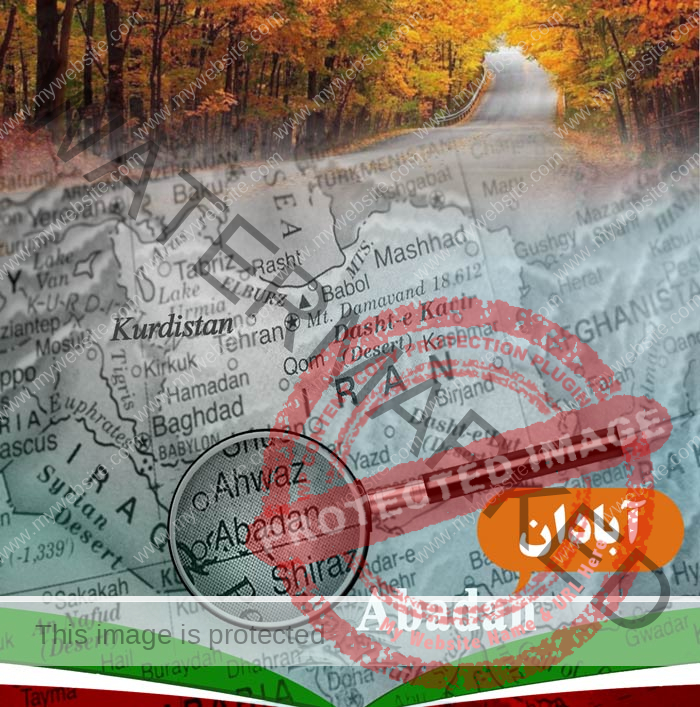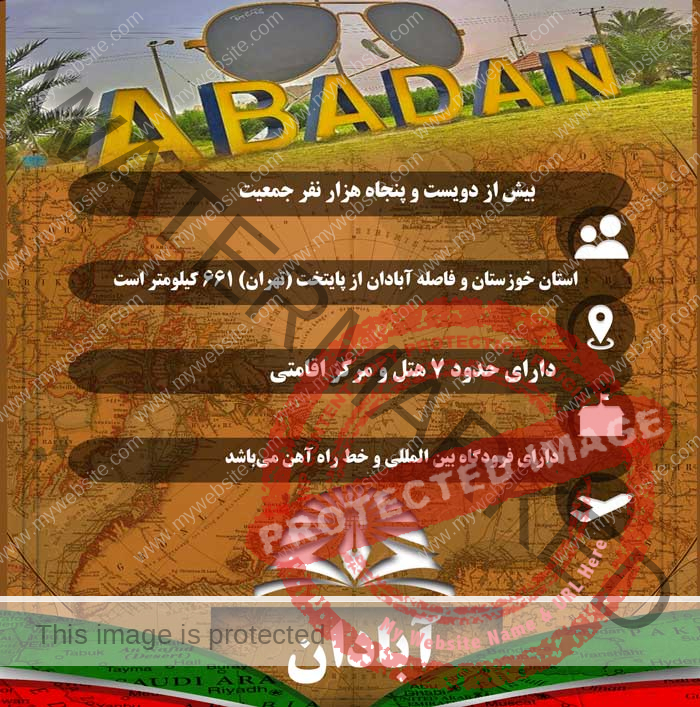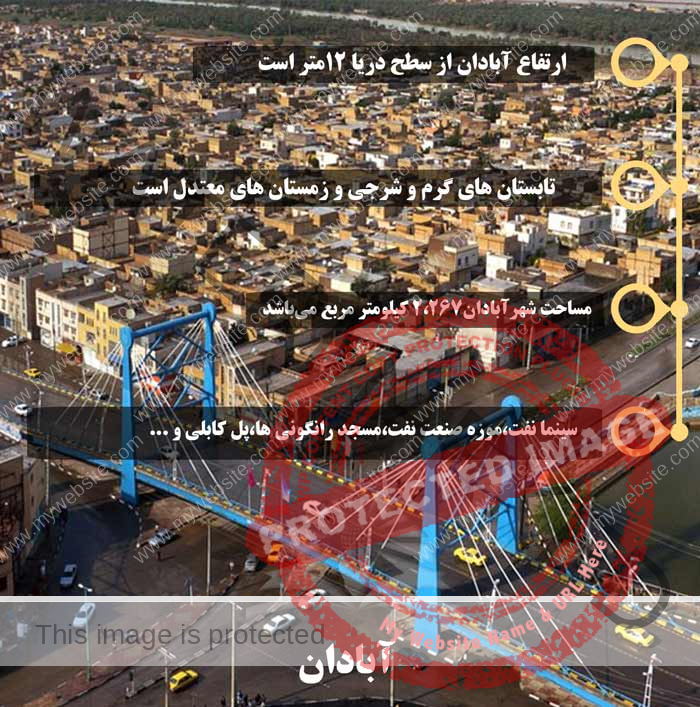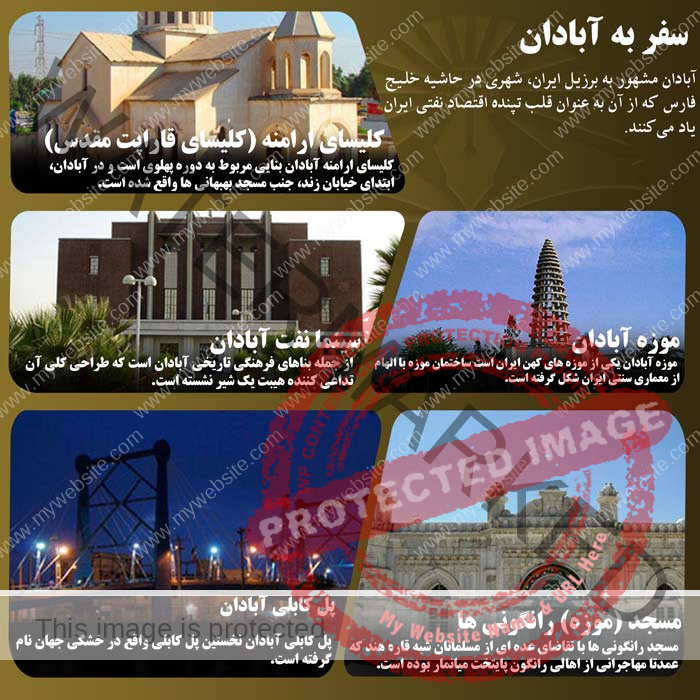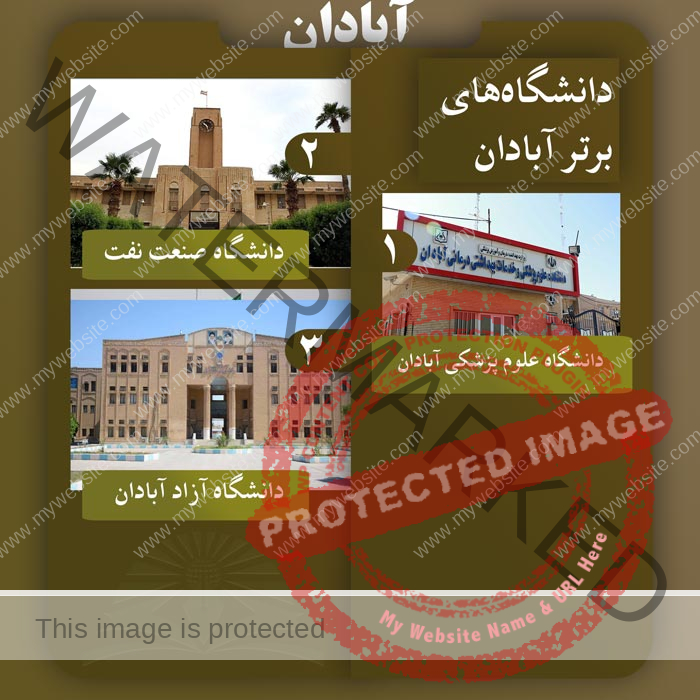![]()
Abadan City is one of the cities of Khuzestan province of Iran. The center of this city is the city of Abadan. Join us to make studying in Abadan easy for you.
Abadan
Since the Second World War, this city has been one of the most important cities in Iran due to its oil and petrochemical refinery, its strategic location, and its border with Iraq. One of the largest oil refineries in the world (Abadan Oil Refinery) is located in this city.
Some historians believe that the Abadan area was inhabited before the time of the Greek historian Herodotus. “Bahmanshir” or “Bahman Ardeshir” or “Vahman Ardeshir”, derived from the name of the first Sassanid king (Ardeshir Babkan), was the former name of a port city that we now know as Abadan and Ardeshir Babkan had done many actions in this part of Iran. This city was destroyed in the Arab invasion of Khuzestan and a garrison was built in its place. Since the first commander of this garrison was a man named Abbad Ibn Hossein Habti, a small town was created around this garrison, assigned to this man and It was called Ibadan.
Abadan’s fame in the first centuries of Hijri was mostly related to caravanserais, monasteries, and mosques, and also due to the existence of a tomb attributed to Khizr and Elias. This tomb still exists, and for this reason, Abadan was called Al-Khidr Island for a long time. Abadan gradually fell into ruin in the 7th and 8th centuries and lost its commercial importance due to its proximity to the sea.
Geographical Location
The geographical location of this city is 48 degrees 17 minutes long and 30 degrees 20 minutes latitude, with a height of 3 meters above sea level and a width of 2,796 square kilometers. The boundaries of Abadan from the north to Shadgan, from the east and south to the Gulf of Pars, from the southwest and west to the country of Iraq, which forms the natural border between the Arvand River and is limited to Khorramshahr from the northwest.
Transportation
At the same time as the construction of one of the largest steel factories in Baft city, the study operation of Sirjan Baft Kerman railway was started and also by connecting Sirjan railway to Niriz Estehban route, Shiraz, Kazaron, Brazjan port, Ganaveh port, Dilam port, Handijan port, Mahsher port, Shadgan, Abadan, which is located in the same line and Most of the mentioned cities have steel-related industries in them, and it also explains the lack of a line that connects the southeast to the southwest by railway lines.
Abadan Airport was established in 1320 by the Country Oil Company. The first foreign flight of this airport took place in 1328. From the very beginning, this airport was an international airport and many international and domestic flights were carried out through it, to the point where this airport was an alternative and auxiliary to Mehrabad Airport in Tehran for foreign flights. Abadan Airport was once located in the international air corridor. (the routes that planes follow during flight from one air terminal to another) was the only transit, catering, and refueling airport on the Middle East and Europe route.
Industry and Economy
The economy in Abadan is mainly based on the oil company; which was built in the year 1291 to refine the oil of Masjid Suleiman. At the beginning of the nationalization of the oil industry, the production capacity of the refinery was about 600,000 barrels per day, but today, after the events of the eight-year war, its production capacity has decreased to 400,000 barrels per day.
Abadan also has a petrochemical plant called Abadan Petrochemical, which was built next to the Abadan refinery. In 1387, more than 147 barges and more than 580 fishing motorboats were engaged in fishing in the Abadan region. Also, on June 4, 1383, a free trade zone was announced, which brought foreign and domestic investors into the city.
Abadan port, located on the bank of the Arvand River, can transfer twenty thousand tons of goods, which has increased in importance due to the prosperity of the Arvand free trade zone. Also, Abadan is the largest producer of dates in Khuzestan province, it has 12,451 hectares of land that is related to palm trees and contains more than two million palm trees. Due to the salinity of the Arvandroud River water, the mechanized irrigation and drainage plan, which is one of the important national projects, is being implemented in the city, by which suitable water is pumped from the Bahmanshir River for the crops on the border of the Arvandroud river.
Abadan Refinery
After the discovery of oil in the city of Masjid Suleiman, it was necessary to establish an oil refinery for refining oil. For this reason, this refinery was built by the British in 1291. This refinery initially refined 2,500 barrels of oil per day. The capacity of the Abadan refinery reached 5,000 barrels per day in 1330, which reached 600,000 barrels per day after the investment of foreign companies, which can be called the largest refinery in the world.
Abadan Petrochemical
In 1342, the French Petroleum Institute was assigned through the Program and Budget Organization to investigate the location of the establishment of petrochemical industries in Iran; And considering the proximity of Abadan to the oil fields, as well as the existence of oil pipelines already built for the Abadan refinery and access to permanent freshwater sources due to the proximity of Abadan to the Arvand River, these studies led to the selection of the city of Abadan and the establishment of the Abadan Petrochemical Joint Stock Company with the participation of 74% of the shares of the National Petrochemical Company and 26% of the shares of the American BF Goodridge Company
In 1346, due to the fact that there was no experience in the construction of petrochemical complexes in the country, the construction of the complex was started by the American Lamas company, and only two years later in 1348, it was officially put into operation.
Tourism Sightseeing
Abadan is one of the oldest cities in Iran, which has special natural, historical, tourism, commercial, and spiritual beauties. As mentioned, the best time to go and have fun in Abadan is the last days of March and the beginning of April.
Among the scenic and natural places of Abadan are:
The very beautiful coast of the Arvand rivers is called Bahmanshir, and with basic knowledge, you can use its unique places for fishing and recreation.
Among the historical places of Abadan city, we can mention Abadan Church, Naft Cinema, Bowardeh, and Brim areas, Abadan Oil Refinery (Abadan Oil Refinery is one of the oldest oil refineries in the world), Abadan Oil College, each of which has a history to tell. Considering the approval of the Arvand Free Trade Zone, commercial attractions will certainly be one of the attractions of Abadan for visitors.
The shrines of Khizr Nabi and Seyyed Abbas, as well as the shrines of Reza, are important pilgrimage sites in Abadan.
Hospitals
- Shahid Ashrafi Isfahani Hospital
- Shahid Dr. Shahidzadeh Hospital
- Faridah Behbahani Hospital
- Shahid Beqai Comprehensive Health Service Center
Studying in Abadan
There are 5 scientific and academic centers in Abadan city. Abadan universities have the privilege of 3 specialized scientific journals and have published 69 issues so far. Abadan city has hosted 53 specialized scientific conferences and 1 scientific lecture. Researchers of Abadan universities and scientific centers have published 6,813 scientific articles, including 829 journal articles, 3,452 articles in domestic scientific conferences, and 829 international articles. They were professors and faculty members.
Sanat Naft University is one of the most prestigious universities in the country.
